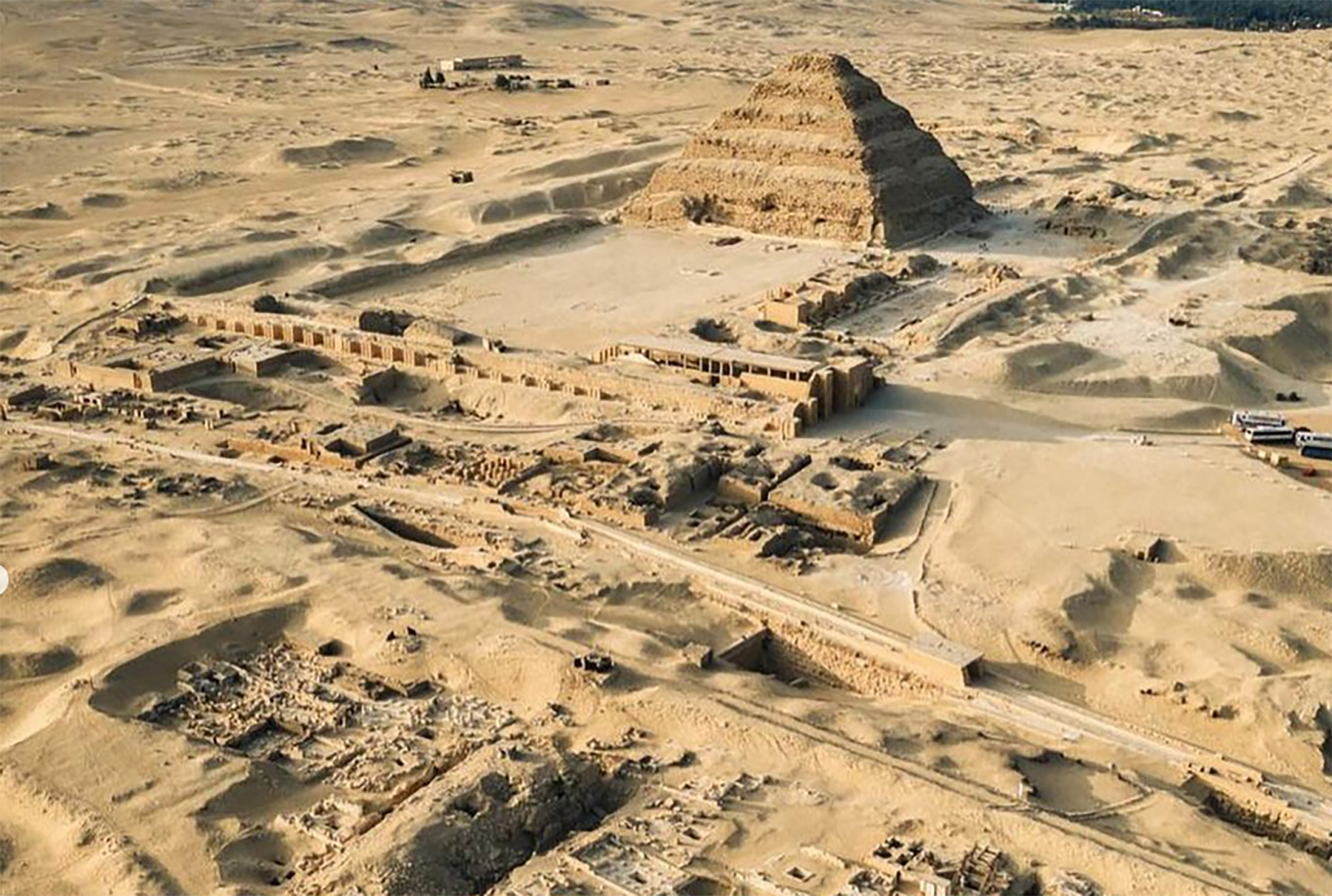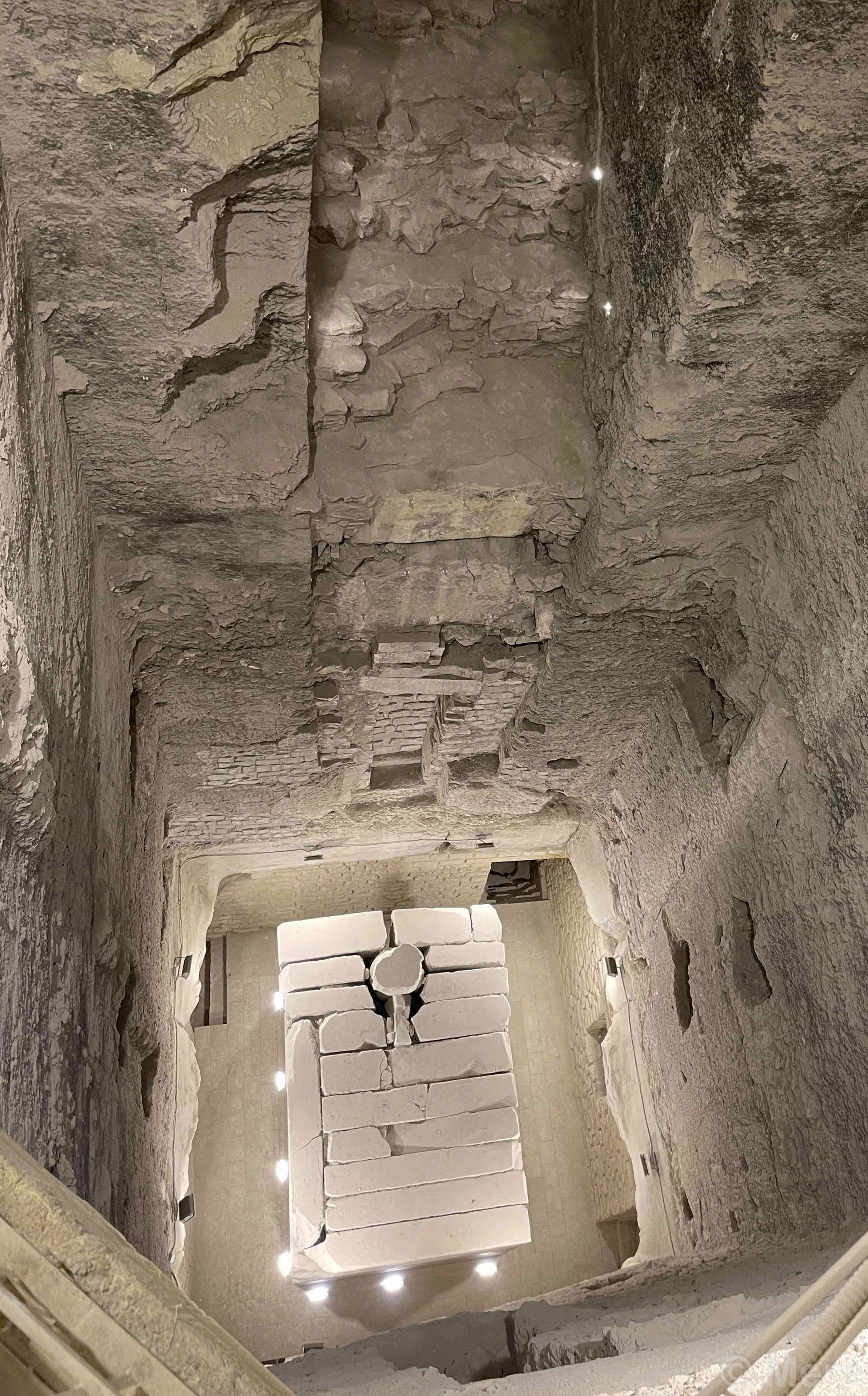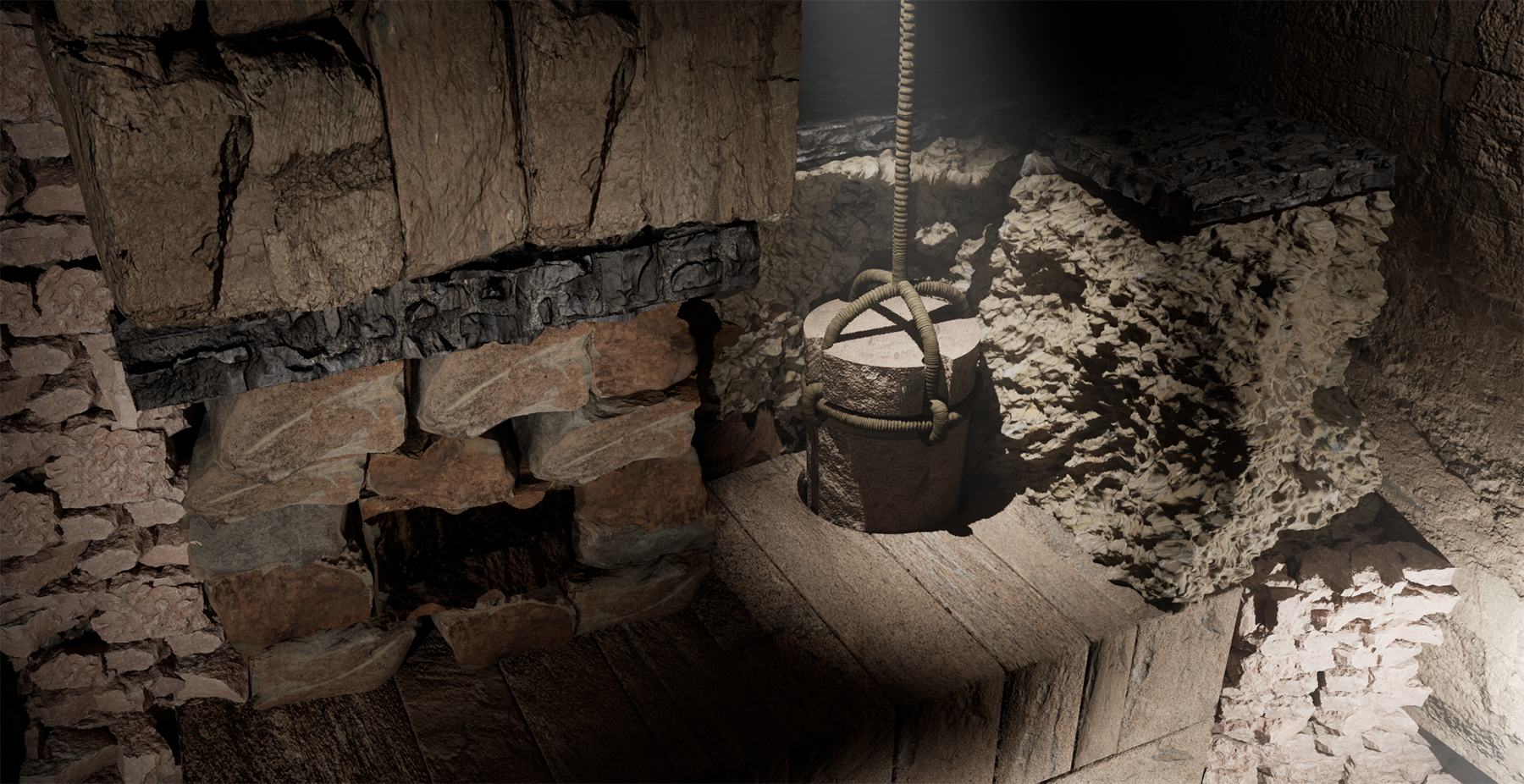
By Sarah Derouin, Ph.D.
The first glimpse of a pyramid rising from the desert floor is awe-inducing. The sheer size of the structure and its millennia-age staying power is enough to capture the imagination of any engineering-inclined visitor.
Researchers have long debated how Egyptian engineers constructed these structures more than 4,500 years ago, with hypotheses including floating the blocks of rocks down rivers to employing ramps, rollers, and levers.
Further reading:
- How are ancient Egyptian and modern American road construction linked?
- Water has played a vital role in shaping civilization
- How did ancient engineers of Mesa Verde harness water?
To help reconstruct ancient construction, researchers look for clues within the landscape around the pyramids as well as within the structure itself. In a new study in scientific journal PLOS ONE, researchers from multiple disciplines combined their skills to investigate the Step Pyramid of Djoser, in Saqqara, Egypt.
They found extensive evidence of an advanced hydraulic engineering system that would not only control water pathways and storage but would allow ancient builders to leverage the power of water to loft massive stone blocks to multiple heights inside the structures. The researchers say their findings suggest that hydraulic engineering may have been a significant player in ancient pyramid construction.
The many mysteries of ancient Egyptians
The step pyramid is part of a funerary complex that was built for King Djoser around 2680 B.C.E. The structures constructed during this time reveal a major innovation: the pyramid-shaped building. Over decades, workers toiled, precisely stacking millions of giant rock blocks to create the grand, triangular-shaped resting site for the pharaoh.

The stones that make up Djoser’s pyramid are substantial, weighing about 650 pounds each. The exact details of how Egyptians extracted, moved, and stacked these blocks into pyramids have been hypothesized for decades, but the exact method of construction remains a mystery.
One reason the mystery remains is that historical documentation from this time is extremely limited, says the study’s lead author, Xavier Landreau, Ph.D., a hydrological specialist at Paleotechnic, a research institute that specializes in archaeology and ancient technologies analysis.
“The very first pyramid texts appear only about the Fifth Dynasty, and we’re speaking about structures in the Third Dynasty,” he says. “We have almost nothing.”
Remembering details about technological advances can be fleeting, Landreau says. He points out that even today, without proper documentation of a project, “we will forget how it works. If we want to build it again, we will have to compute it completely again.”
In addition to sparse records, reconstructing ancient infrastructures can be difficult due to the ravages of time. Marcelo Garcia, Ph.D., a civil engineering professor and director of the Ven Te Chow Hydrosystems Laboratory at University of Illinois at Urbana-Champaign, has investigated Roman-built structures and ancient engineering methods.
“In the case of the Roman aqueducts, they are at the mercy of the weather, and many times they get buried; you only see part of it because other components of the system are either buried or they are not immediately available to the naked eye,” he said. Garcia was not part of this study.
To reconstruct the engineering history of the step pyramid, Landreau and his colleagues reviewed and compiled the many research studies in the region. They also completed a detailed investigation of the landscape around the complex and surveyed built structures in and around the pyramid.
Ancient engineering revealed
A few hundred yards southwest of the step pyramid, a large, rectangular structure blocks the Abusir wadi valley. The structure’s footprint is about 2.4 million square feet. Landreau points out that in prior work, many scholars speculated on the purpose of the structure, suggesting everything from a funerary monument to a cattle enclosure.
Landreau recalls that the team immediately thought it was a damming structure but wanted to make sure. Using a multipronged approach, the team employed mapping and image analysis, traced vegetation and paleochannels, and used a ground-penetrating radar survey, confirming that the structure was a dam.
The dam consists of two walls, storing water during wetter times but also acting as a purification system. “It has all the technical signatures of a water treatment facility,” Landreau says, adding that this is similar to today’s check dams. River water would encounter the first wall of the dam, and the stream velocity would slow, dropping out sediment into the basin. “Only the sediment-free part of the water would be transferred to the second compartment and progressively refresh.”
The team mapped the path of water downstream and found that it could partially end up collecting in a moatlike trench that surrounds the step pyramid complex. Known as the Deep Trench, it was cut into the bedrock about 65 feet deep and 10 feet wide. While some postulate that the trench was for rock quarrying, Landreau notes that a 10-foot-wide excavation slot is not easy to navigate, especially without modern equipment. The researchers instead believe the trench acted as a conduit for water.
The team found the trench connected to three subterranean granite compartments. The compartments showed signs of engineering, including rough masonry sealed with mortar joints and rock plugs at the bottom of the chambers. The chambers are connected by a series of underground tunnels carved in the rock.

This underground system could funnel water to two significant vertical shafts on the north and south ends of the complex. The square shafts measure about 23 feet wide and extend from about 92 to 98 feet in depth. The north shaft is underneath the Djoser Step Pyramid.
The team mapped not only the landscape around the step pyramid but the underground infrastructure in 3D using Unreal Engine software from video game company Ubisoft. Landreau says the software allowed the team to see the whole system at once and test different water pathways and models.
Considering the underground plumbing characteristics, the team concluded there was an advanced hydraulic engineering system used to transport and lift large rock blocks for construction. The system acted as a lock used for shipping. Water funneled from the granite boxes would fill up the area below the vertical shafts. Rafts piled with cut stone would then be raised upward by water, where workers could unload them.

To test if the process was possible, the team calculated a loading capacity for the rafts. “We found that the process could lift up to about 100 tons, which means a lot of stones simultaneously,” Landreau said.
“I think they do make the case for a very highly developed water management system that included several components to it,” Garcia said. He notes that the researchers put together an impressive set of renderings of the whole water system. However, he added that he would like to understand more about the underlying mechanisms of the lifting process in the shafts.
“What this tells me is that these Egyptians have a lot of respect for water,” Garcia said. “They made the most of out of it. … They have all these ideas of how to beautify the water, then use it for different things like the building of the pyramid. It's an interesting story.”



